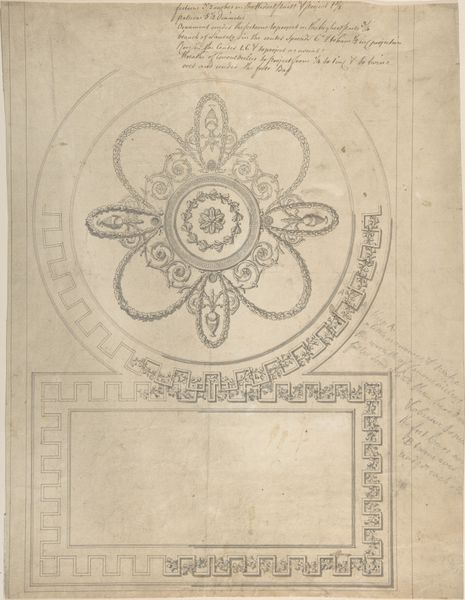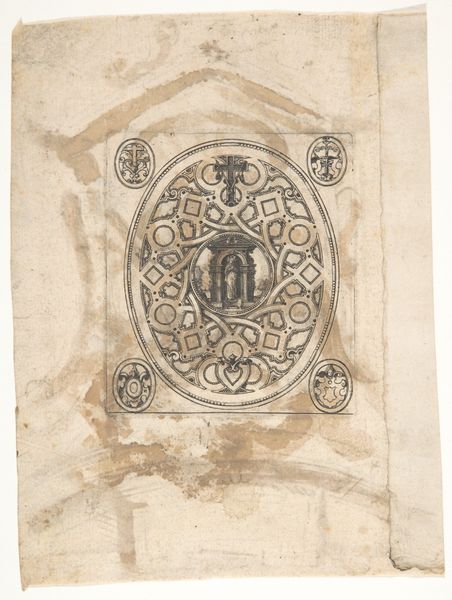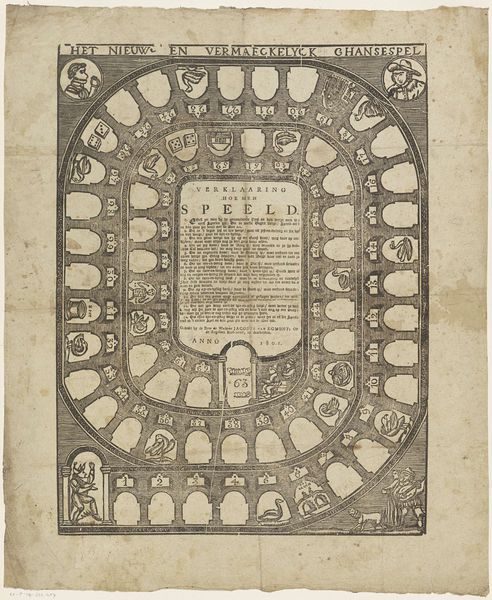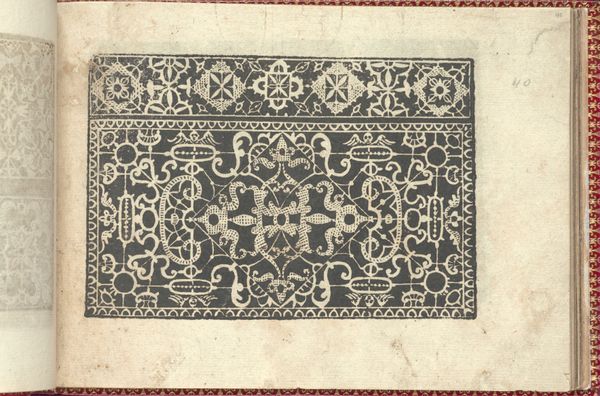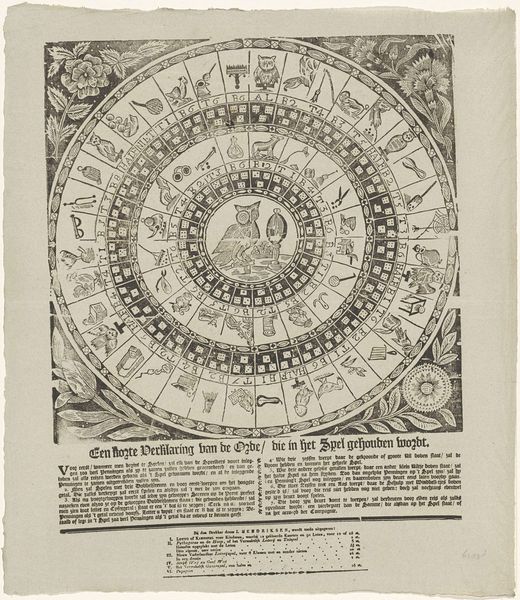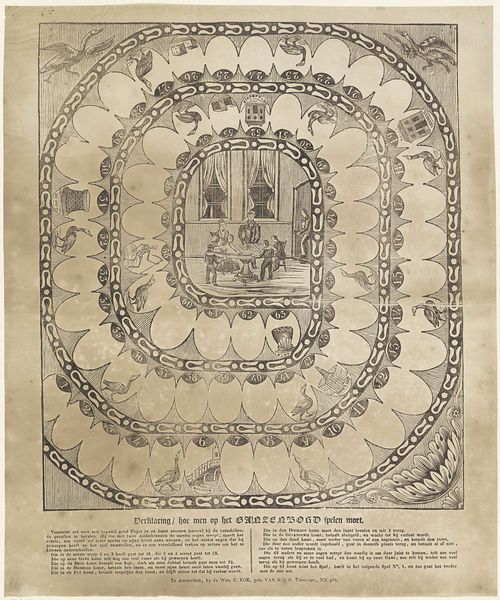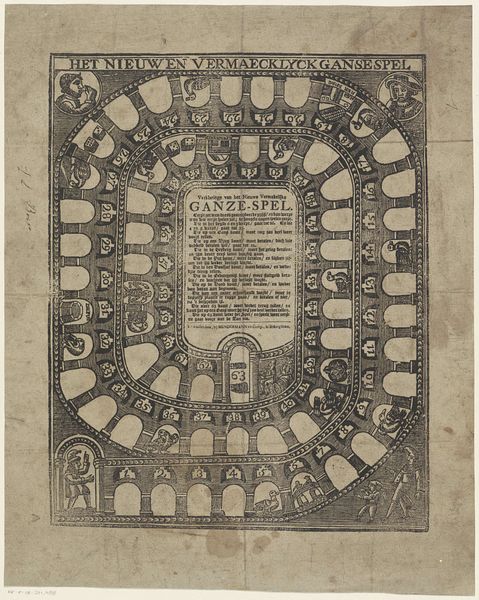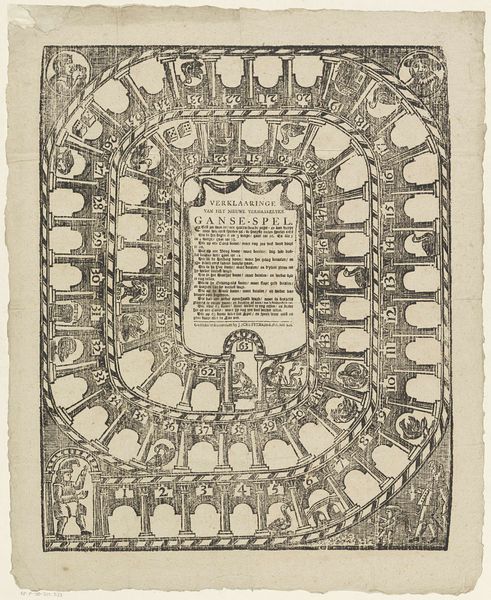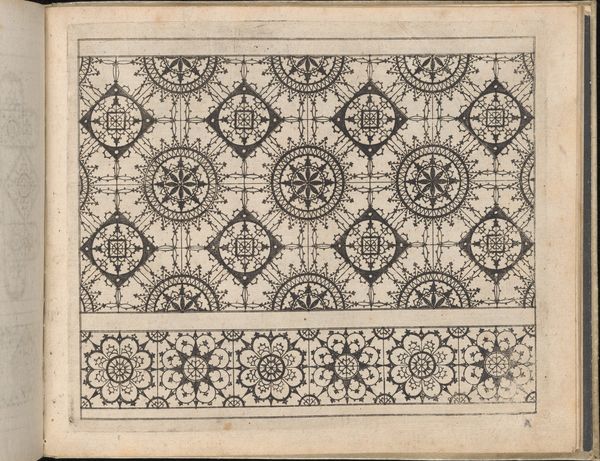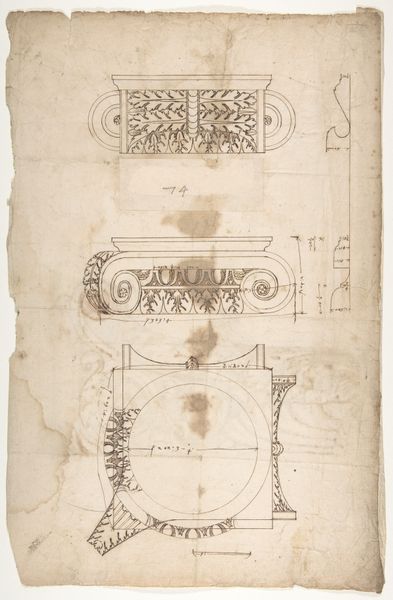
graphic-art, print, engraving
#
graphic-art
#
medieval
# print
#
old engraving style
#
pen work
#
genre-painting
#
engraving
Dimensions: height mm, width mm
Copyright: Rijks Museum: Open Domain
Curator: Before us, we have a print called "Het nieuw en vermaeckelyck ghansespel" which translates to "The New and Amusing Game of Goose." Created between 1760 and 1793 by Adriaan Walpot, it showcases an elaborate, almost maze-like board game design rendered in engraving. Editor: My immediate reaction is a sense of organized chaos. The delicate lines and intricate detailing give the piece a meticulously crafted appearance. But all those tiny spaces with pictures inside seem a bit cramped—it almost mirrors the experience of early industrial society with too many people. Curator: Exactly! Games like this were highly didactic and steeped in symbolism, often reflecting societal structures or moral lessons. Each space on this winding path represents a step in life's journey, and likely contains its own set of obstacles or rewards. Consider the prevalence of certain motifs or characters as keys to deciphering those messages. Editor: It feels almost like a satire of life and ambition. Each of those illustrated vignettes offers a little story of fortune, misfortune, perhaps even subtle critique—though filtered through the moral lens of the time, naturally. Looking at how the players move through those squares, the goose spaces scattered about—it's clear this is commenting on society’s aspirations. Curator: The goose itself holds ancient significance. In some cultures, it's seen as a symbol of prosperity and good fortune. In others, it represents vigilance or the soul's journey after death. Walpot is using this well-worn symbol to invite people into a narrative, a collective cultural exercise aimed towards some common cultural understanding of their world. Editor: Which raises interesting questions of social capital and accessibility. Who was the target audience for something like this? Was it aimed at families? Educational settings? Given the intricacy, was this for elite members to while away the hours, or did it have more grassroots purposes? Curator: That's a vital question. The availability of printed material widened considerably in this period. Games, especially those containing embedded lessons, would’ve found popularity across classes with access. It reinforces moral conduct alongside simple diversion, while at the same time it provided new possibilities for socialization outside of formal education. Editor: I find that very exciting. Even in these little engraved spaces and their winding journey there is encoded potential for social change, reflection, engagement. It’s both entertaining and a method through which moral frameworks get circulated – a tool, essentially, for ideological transformation, however subtle. Curator: I agree, such depth embedded within play provides a window into how people grappled with their world. Editor: It makes you look at the role of game designers or the function of game-playing as an essential instrument of social influence in modern times. Curator: Indeed, these threads connect through time and make Walpot’s "The New and Amusing Game of Goose" so much more than simply child’s play.
Comments
No comments
Be the first to comment and join the conversation on the ultimate creative platform.
